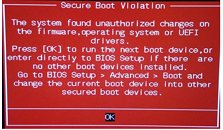- Joined
- Oct 9, 2007
- Messages
- 47,690 (7.42/day)
- Location
- Dublin, Ireland
| System Name | RBMK-1000 |
|---|---|
| Processor | AMD Ryzen 7 5700G |
| Motherboard | Gigabyte B550 AORUS Elite V2 |
| Cooling | DeepCool Gammax L240 V2 |
| Memory | 2x 16GB DDR4-3200 |
| Video Card(s) | Galax RTX 4070 Ti EX |
| Storage | Samsung 990 1TB |
| Display(s) | BenQ 1440p 60 Hz 27-inch |
| Case | Corsair Carbide 100R |
| Audio Device(s) | ASUS SupremeFX S1220A |
| Power Supply | Cooler Master MWE Gold 650W |
| Mouse | ASUS ROG Strix Impact |
| Keyboard | Gamdias Hermes E2 |
| Software | Windows 11 Pro |
Microsoft inadvertently bricked a vast number of PCs running Windows 7, by changing the priority of an erroneous software update. Earlier this month, Microsoft changed the priority of an obscure-sounding security update for Windows 7 from "Optional" to "Recommended," (which by default gets automatically downloaded and installed). This update, KB3133977, bricks machines running ASUS motherboards, in the UEFI mode.
Windows 7 inherently does not support Secure Boot, a feature introduced with Windows 8, which takes advantage of UEFI to provide users with a layer of system integrity throughout the boot process. With KB3133977 installed on Windows 7 machines that use UEFI boot, the motherboard senses a Secure Boot violation, and invalidates the boot device (refuses to boot from it). ASUS recommended a BIOS setting with which you can deactivate Secure Boot while making your motherboard continuing to boot in UEFI mode.

View at TechPowerUp Main Site
Windows 7 inherently does not support Secure Boot, a feature introduced with Windows 8, which takes advantage of UEFI to provide users with a layer of system integrity throughout the boot process. With KB3133977 installed on Windows 7 machines that use UEFI boot, the motherboard senses a Secure Boot violation, and invalidates the boot device (refuses to boot from it). ASUS recommended a BIOS setting with which you can deactivate Secure Boot while making your motherboard continuing to boot in UEFI mode.

View at TechPowerUp Main Site


 mostly Asus [micro code ???]
mostly Asus [micro code ???] sneaky MS
sneaky MS





